It Takes Two To Tango
See It To Believe It
The earliest form of astrology is observational in nature. Looking at the night sky, it is possible to discern the movement of the grahas (planets) against the fixed stars. This movement is generally a well-defined trajectory along the zodiac, but on occasion a graha will slow down its apparent movement and move in the opposite direction. We call this apparent backwards motion retrogression.

The Sanskrit term for retrogression, vakra, has various meanings such as crooked, curved, bowed, bent etc. Indeed, as a graha starts the retrograde cycle it is as if it turns around, and its movement can be traced as a curve or loop as shown in Figure 1. The Sanskrit name for Gaṇeśa comes to mind as he is called vakratunda, or the one with the bent trunk.
Much has been said on retrogression, particularly the famous Mercury retrograde that is generally blamed for many of the communication and other technology related issues. Perhaps not so well known are the retrogression cycles for the other grahas including Venus, Mars, Jupiter, and Saturn.
The change in direction is certainly interesting from an interpretive point of view, but there is another qualitative change that is just as interesting. The retrograde cycle coincides with the point in the orbit around the Sun at which the graha is closest to the Earth. As such, a graha does not go retrograde at a particular point in the zodiac, but as part of the relationship between its orbit and the Earth’s orbit. There is a dance taking place and in the case of retrogression, it very much takes two to tango.
As the graha and Earth get closer, the graha becomes brighter and brighter. In this way, the retrogression amps up the light that’s coming back to us from the graha, and makes it shine.
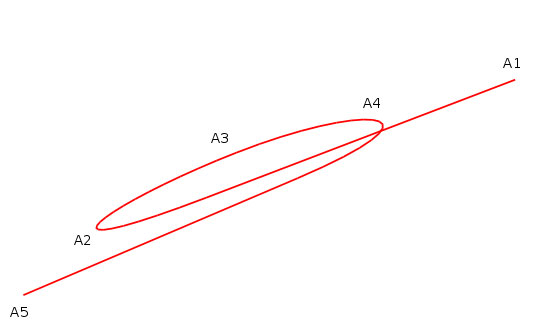
For the purposes of this article we’ll focus our discussion on the outer grahas, since the inner grahas Mercury and Venus have added complexities arising from an astrological effect referred to as combustion.
Examining the brightness at various points in the graha’s movement including direct motion and retrogression, we can conclude that the change in brightness can be significant.
The mechanism to compare brightness is through the concept of apparent magnitude which can be challenging due to its logarithmic scale in which each step of magnitude change equates to a factor of approximately 2.5 in brightness and for which negative numbers indicate a brighter object. The change in magnitude at its brightest, mean, and dimmest for each of the outer grahas is given under Table 1.
| Planet | Brightness | ||
|---|---|---|---|
| Min | Mean | Max | |
| Mars | +1.86 | +0.71 | -2.94 |
| Jupiter | -1.66 | -2.20 | -2.94 |
| Saturn | +1.17 | +0.46 | -0.55 |
Since the apparent magnitude is challenging to work with, another way to assess this is to look at similarly bright objects in the night sky. This can be particularly helpful when looking at Saturn and its associated change in brightness. Refer to Table 2 for a few night stars we can use as markers.
| Rank | Name | Brightness | Commonly known as |
|---|---|---|---|
| #1 | Sirius | -1.46 | The brightest star in the night sky |
| #2 | Canopus | -0.74 | The second brightest star in the night sky |
| #15 | Aldebaran | 0.86 | Brightest star in Taurus |
| #17 | Spica | 0.97 | Brightest star in Virgo |
| #22 | Regulus | 1.39 | Brightest star in Leo |
| #49 | Polaris | 1.98 | The pole star |
A good way to visualize this is by referring to Figure 2, while keeping in mind that negative numbers represent a brighter object.
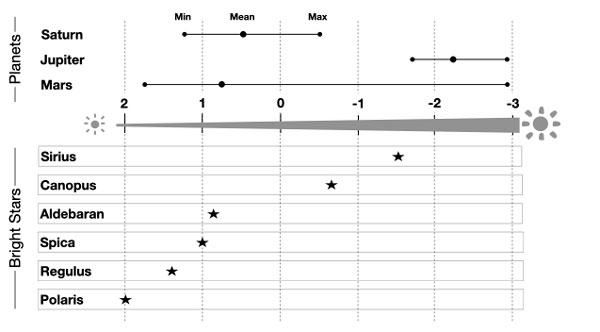
At its dimmest point, Saturn's brightness is between that of Regulus and Spica, the 17th and 22nd brightest stars, while Saturn at its brightest is a little shy of Canopus, the 2nd brightest star in the sky.
The discrepancy in brightness for Mars which has much larger swings in brightness, with a factor of 4.8 apparent magnitude difference between the brightest and dimmest values, which due to the logarithmic scale, means it is about 80 times brighter at its brightest than at its dimmest. In observational terms at its dimmest Mars appears with a magnitude similar to Polaris, while at its brightest it is much brighter than the brightest star Sirius.
Shine Bright Like a Diamond
What can we infer from observing vakra grahas, a state that is both fascinating and quirky?
Bright objects attract our attention. Like shiny cars, or bright diamonds, they are full of sparkle and energy. There is an intensity that is captivating. This leads us to consider that the increase in visibility of a graha during its retrograde cycle signals its strength. We would call this a primary strength indicating that this form of strength is significant because it is based on a clearly visible phenomenon.
Retrogression is not a common state for a graha as most of the time grahas travel along the zodiac in direct motion. This leads us to consider that a retrograde graha has unusual characteristics, something different than its natural state. A good way to describe a graha with this combination of brightness and quirky movement is that it is, in a way, exaggerated. These qualities might show up in interesting ways depending on the specifics of a particular person’s chart.
We have not made a judgement about the retrograde condition as being either positive or negative but rather, we have identified that there is a strength and uniqueness that requires further interpretation.
Walk it Like I Talk It
We reflect our emotions and state of being in the way we talk, stand, sit, and generally move about the world. For example, we can think of someone confidently walking into a business meeting, walking upright, chest out head forward. Compare this with someone who may be less confident walking to the podium for a public speech, the back may be rounded, the eyes gazing downward.
Just as we can derive meaning and interpretation of someone’s state of being from the way they walk; we can apply this analysis to the graha’s movements. In Sanskrit we refer to this as gati, or gait.
We can also take inspiration on the study of movement from the animal kingdom. Consider for example the movement of a cheetah built for speed and agility, versus a sloth with slow deliberate movements.


The analysis of gati extends and refines the analysis of forward motion vs retrogression to include a more finely grained understanding of the quality of movement. For example, a graha could be moving forward in a fast or hurried way compared to its more normal movement. Before retrogression, a graha will appear to stand still. This is perhaps one of the rarest of occurrences and is similarly imbued with deep meanings (beyond the scope of this article). Finally, a graha can be retrograde heading toward maximum retrogression or be retrograde but slowing down in its retrogression as it prepares to go back to forward motion.
While forward motion and retrogression are an astronomical phenomenon that can be observed by tracking the movement of the graha through the zodiac, gati is more refined and subtle and may not be so easily observed.
As we consider the planet’s movement through the retrogression cycle, we can begin to reflect on some of the possible meanings. For example, we see a retrograde graha going back on its tracks and revisiting an arc of the zodiac it has already traveled through. Indeed, a retrograde graha will travel through an arc of the zodiac three times — during its original forward motion, its retrograde motion, and its subsequent forward motion as it leaves the retrograde state. One can infer from the graha revisiting a section of the zodiac that there is an emphasis or intensity around the meanings associated with this area.
In other words, a retrograde graha creates an area of deep focus for the native which can manifest in various ways. For example, we could observe a rehashing, reformulating, transfiguring, transforming around the themes of this area. Or we could observe a twisting or distortion around these themes.
I Want It That Way
One important distinction to make when looking at retrograde grahas is whether they are a natural benefic or natural malefic, The concept of natural benefic and natural malefic grahas is core to the Classical Indian system of chart analysis, and so it is no surprise to find that it plays an important role when looking at retrograde grahas. Their exaggeration will take on different colors when they are natural benefics vs natural malefics.
In the case of natural benefics we think of the added brilliance as giving the graha and what it represents in the chart the strength to twist, refashion, and turn matters around to their own liking. There could be a period of accommodating, or patiently waiting for the opportunity to transform either themselves or the situation to “have it their way”.


We can visualize the refashioning effect in Image 4 showing The Golden Book Gown made of recycled and discarded paper book pages.
In the case of natural malefics we think of the added brilliance as creating a distortion effect, for example, the way a loudspeaker will amplify a voice to the point of distortion if the volume is set too high. We can also think about light in a high contrast environment such as a dark object with a bright background, and how that can distort an image — the object features are dark and unclear and the bright background bleeds into the picture. For retrograde natural malefics, this distortion effect can be seen through misrepresentation, self aggrandizement, or magnification. We can visualize the distortion effect in Image 5, showing a patterned background distorted by the objects in front of it.
Let’s see how these quirky grahas light up the charts of the some iconic characters.
I’m A Mirrorball

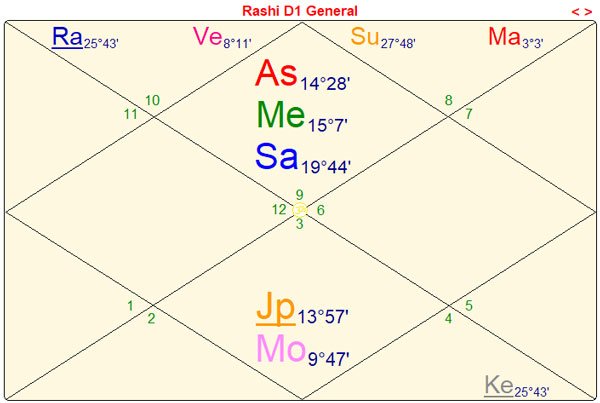
As an example of retrograde natural benefics, we’ll look at Taylor Swift’s chart with a retrograde Jupiter as lord of the first in the seventh. The astronomical table (not included) shows a brightness of -2.7 which is close to the maximum brightness of -2.9. It also shows a retrograde motion of -152%, which means Jupiter is moving in a retrograde manner particularly quickly compared to its average forward motion.
With retrograde Jupiter as lord of the first, we would expect the meanings of the retrograde natural benefic to accrue to Taylor Swift herself. Indeed, we find that she has transformed, and refashioned herself numerous times.
Taylor Swift zoomed to fame as the darling of the Country music world. The tweeners ate up her high school angst and she attained the pinnacle of success sweeping the top awards at the CMA’s in 2009. With the release of the slick “1989” fans saw a jaw-dropping transformation into a pop princess with all the moves. Yet she managed to not alienate her loyal following. They grew up with her through all her twists and turns and continue to be agog at her versatility as demonstrated by the release of her recent album, Folklore.
It doesn’t hurt that she runs the daśā of that strong lagna lord Jupiter starting at thirteen years old. Anchoring almost countless strong auspicious yogas across her first and seventh houses including a stunning Mahāparivārtana yoga, it is small wonder that she is loved by her public and has remained at the very pinnacle of success.
The nature of the retrograde natural benefic first lord can perhaps be best summarized by Taylor Swift’s own sage-like lyrics, from that latest 2020 album - “I’m a mirrorball, I can change everything about me to fit in”.
Because retrograde Jupiter is in the seventh house, we can expect an impact in the area of relationships. A major theme in her life is her ability to refashion, reinvent and even twist a failed relationship into a compelling song. Talk about making lemonade out of lemons! Taylor turned those stories into mega hits with such gems as “Never ever ever getting back together”.
There is always rampant speculation about which songs are representative of which prior relationship. It got so that potential partners were worried about what song she would write about them. She just has that way with lyrics and could turn the story into her point of view and then laugh all the way to the bank.
The effect of the retrograde Jupiter in Taylor Swift’s chart is particularly pure, because in addition to being a natural benefic, it is also a temporal benefic, so there is a clear alignment of the way in which the planet expresses itself in the chart.
My Heart Will Go On

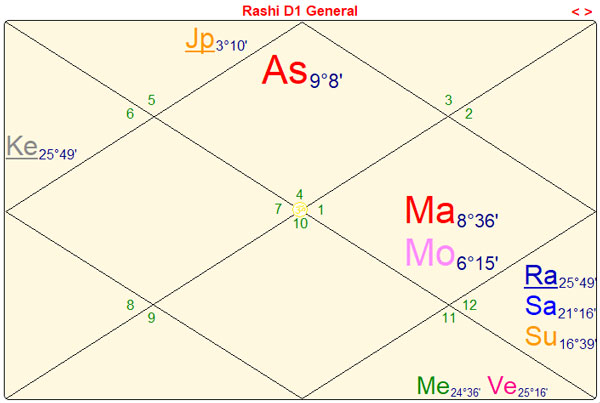
The native with well-placed retrograde natural benefics can redesign, restyle or customize appropriate areas of life and have the ability and power to refashion themselves or their environment according to their needs.
We can see in the chart of Celine Dion, a retrograde Jupiter in the second house. Consulting the astronomical table, we can confirm that it is very much retrograde traveling at -82% of average forward motion.
It is an outstanding Jupiter — strong and stabilized by Mercury and Venus without any destabilization. It is forming amazing yogas including a Suśubha yoga, Kalānidhi yoga, Khadga yoga and Rāja yoga of the fourth and ninth lords. The placement of retrograde Jupiter in the second house is particularly interesting as this house is associated with, among other things, the face, eyes, nose, mouth, teeth and voice.
Though gifted with an incredible voice, Celine, as per her bio on Wikipedia, fretted about her facial features saying, “’I did not have, visually, what it took. I was not pretty. I had teeth problems, and I was very skinny. I did not fit the mold”. Her bio further states that her teeth problems were magnified by the tabloids which referred to her as "Canine Dion” as a teenager. The crooked nature of the teeth fits the vakra descriptor of crooked or bent. However, the re-fashioning tendency of a retrograde natural benefic also brings in not just the desire to mold the situation but the capacity to do it. We see in Celine’s life a decision to change or mold her image, a 2nd house theme, to help achieve the fame and recognition she was after. She underwent dental surgery to improve her appearance, a risky venture as teeth alignment can affect the voice.
We can also examine the retrograde Jupiter as lord of the ninth house, which brings themes of virtue and charity. In Celine’s life there is an early involvement in philanthropy. She wanted to reshape the world according to her values and did so through her support of Cystic Fibrosis, a disease that hit close to home through the loss of a precious niece. She also championed “World Children's Day” and many other health and educational campaigns such as HIV prevention. More recently she started a gender-neutral children’s fashion line.
The Voice

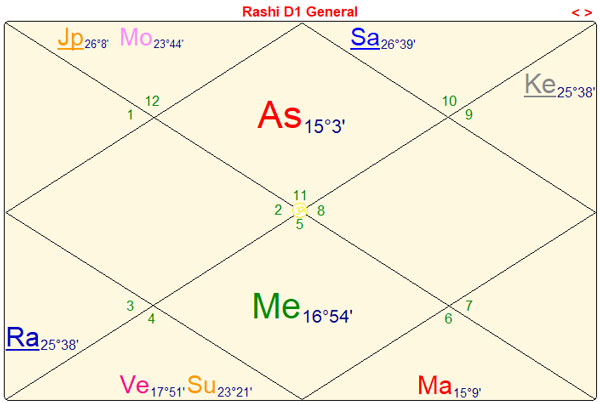
Before the popular TV show by the same name, there was “The Voice” Whitney Houston, with her bio quoting a four-octave range.
As we’ve seen earlier, the retrograde natural malefics result in an amped up state that creates distortions, mis-representation and magnification. Notice in her chart retrograde Saturn as both 1st and 12th lord in the 12th house. Reviewing the astronomical table, we see Saturn moving at -224% of its average forward motion. This means Saturn is in a clear retrograde state and moving particularly fast. Indeed, Saturn is a few days from achieving its maximum retrograde speed in this retrograde cycle. With Saturn as both lagna lord and 12th lord and in the 12th house, we can expect a connection between the native as it relates to exaggeration, overvaluing or emphasis of 12th house matters.
Indeed, we see in Whitney’s life an extraordinary voice that was silenced before her time by the personal struggles around addiction. The concept of misrepresentation, and amped up exaggeration reflects in the 12th house meanings such as attempting to keep the drug use hidden while being increasingly weakened by it, including loss of bodily vigor as shown by her extremely thin frame. Finally, a professional fall can also be attributed to the twelfth house placement and lordship, one that ended with an accidental drowning likely attributed to a drug overdose.
Whitney was put in a position where she had to project confidence and wholesomeness. What the public saw initially was not the entirety of who she was because of a problem with self-esteem. The challenges around self-esteem can be observed from the placement of the lagna lord gone to the twelfth house, while the misrepresentation of her public persona can be attributed to the retrograde nature of the first lord Saturn. The retrograde first lord attempts to address the issue by altering the perception around it, rather than addressing the issue at its core, thus manifesting as a misrepresentation.
Notice as well the retrograde Jupiter which is particularly strong in Whitney’s chart as it is both retrograde and in its own house. Upon closer inspection we find Jupiter is at the very beginning of its retrograde cycle, having just transitioned from direct motion to retrograde motion less than twelve hours prior. This is a special case we briefly touched upon while introducing the concept of gati, an unusual period during which a planet appears to be standing still. The transitions between direct motion and retrograde motion as well as vice versa are rare, as they only take place twice during a retrograde cycle. This condition of the planet standing still is imbued with deep meaning. While this remarkable occurrence is beyond the scope of this article, one can glance at the consequential meaning it carries by considering Jupiter’s placement and lordship of the 2nd house of The Voice.
The Godfather

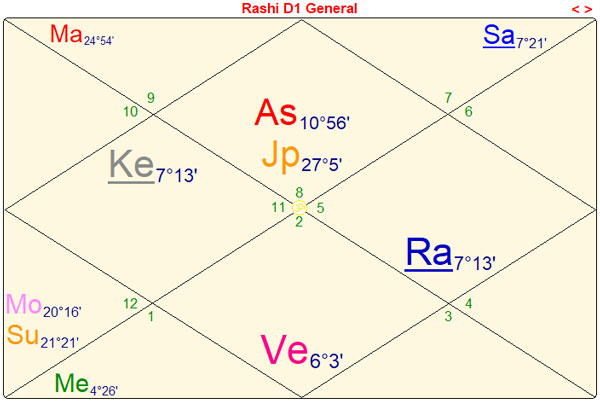
Legendary actor and director Marlon Brando is best known for his roles in films such as “A Streetcar Named Desire”, and the iconic “The Godfather”. Twice winner of the Oscar for Best Actor, as well as being named one of the top five greatest movie stars by the American Film Institute, Marlon Brando left a lasting legacy in Hollywood film.
Marlon Brando’s chart is powerful with two strong natural benefics across the 1/7 axis and further strengthened by a mahāparivārtana yoga between the first and second lords. The strength of the lagna and yogas indicate indicate rise and fame, as expected for an actor with such renown.
We also see a retrograde Saturn in the twelfth house, lord of the third and fourth. Saturn is particularly strong as it is in its exaltation sign in Libra. Saturn is traveling retrograde at -215% of its average direct motion, and will reach its peak retrograde speed in another 2 weeks at a speed of -229%, so we can see that it is traveling quite fast and close to its maximum retrograde speed.
As in Whitney Houston’s chart, retrograde Saturn will bring themes of exaggeration, overemphasis, and distortion around meanings of the twelfth house. In this case it manifested dramatically as enjoyment, or bhoga in Sanskrit, which is one of the twelfth house meanings. It can also be translated as indulgence.
In Marlon Brando’s life, we can see the indulgence reflected through his eating habits. While indulgence is associated with the twelfth house, Saturn’s aspect into the second house is a confluent indication that the indulgence themes are around food as this is one of the second house meanings. The emphasis of Saturn is particularly strong in his chart as it aspects the first lord Mars who is located in the second house further influencing and personalizing second house themes.
Brando’s increase in weight was a concern for the producers and directors of his films. From a health perspective and the practical matter that he would burst out of his costumes on a regular basis, something had to be done. He was put on strict diets. However, from his bio on IMDb, we learn that Marlon Brando would buy five gallons of ice cream at a time, and row out into a lagoon to enjoy it away from prying eyes. Apparently, he also enjoyed snacks consisting of a pound of bacon and entire loaf of bread.
Another story relates how the fridge was on lockdown to avoid suspected pilfering by the household staff only to find that it was Brando himself who was sneaking in at night to chow down. On yet another occasion it is said that some of his friends were “throwing bags of Burger King Whoppers over the gates of his estate late at night to relieve (his) hunger.” Weighing over 300 pounds, he suffered from diabetes, pulmonary fibrosis and congestive heart failure leading to his demise.
As we saw with Whitney Houston’s concealment of her substance abuse challenges under the influence of her twelfth house Saturn, we see a similar behavior in Brandon’s secret plots and concealment around his eating addiction as evidenced by retreating to the middle of a lagoon to indulge, the secret burger deliveries, and the midnight raiding of the fridge.
It is also interesting to consider that the eating disorder was punctuated by binge eating with weight gain followed by intense dieting. In a way, this mimics the behavior of the retrograde grahas as they twist and turn in their cycle of going direct, then retrograde, then direct again.
Finally, we’ll look at another influence of retrograde Saturn on the second house. We examined the aspect of Saturn on the second house as it relates to food and eating habits, now we’ll look at the second house as it relates to the voice.
We know from his performances, for example the famous “Stella!” scene in A Streetcar Named Desire, that Marlon Brando’s voice was certainly eccentric. His IMDb bio refers to his voice as “Bizarrely unique (…) with an extreme nasal tonality”. This fits with the eccentricity associated with movements of retrograde grahas. Yet because of his strong lagna and the massive yogas in his chart, even a voice that sounds like he has a bunch of marbles in his mouth becomes an iconic signature.
His ability to distort his voice came through in one of his most quintessential roles. It is said that he stuffed some tissue in his mouth to render a distinctive voice, one that would turn him into The Godfather.
One step back, two steps forward
Sometimes we have to take a step back to reevaluate, reassess where we’ve been, before we can move forward. Often growth does not happen in a straight line, and a setback can be a momentous occasion to take note of the direction we are in, and alter or refashion ourselves as desired. It can be a pivotal moment of transformation.
This common wisdom is well aligned with the effect we’ve seen for planets in retrogression, revisiting an area of the zodiac they’ve already traveled, or taking a step back, so that they can then move forward with confidence and conviction. We’ve looked at retrograde natural benefics, and examined the effect this can have on natives starting with Taylor Swift and how she’s refashioned herself, her music and her relationships. We’ve also examined this with Celine Dion, and how she underwent some risky surgery to transform herself into the “right” image for a super star. She also strove to reshape the world through her support of numerous charities.
Investigating the effect of retrograde natural malefics, we’ve looked at Whitney Houston and the effect this had with respect to misrepresenting herself as a wholesome role model, while struggling with debilitating addiction issues. Finally, we also examined the retrograde natural malefics in Marlon Brando’s life as it expressed through an exaggeration or distortion around enjoyment of food.
While the selected cases highlight these themes clearly and prominently, chart analysis cannot be done in isolation looking only at a single planetary placement or condition such a retrogression. Yet at the same time, we see across these charts a commonality that is described and grounded in the tradition.
Author Diego Iglesias

Diego is a student of the ancient wisdom of India as expressed in the Vedic Arts including Yoga, Philosophy, Ayurveda and Jyotiṣa. He completed a Yoga Teacher Training credential through the Mount Madonna Center in 2014, and a Certified Ayurvedic Practitioner program at the Mount Madonna College of Ayurveda in 2015. Since 2015 he has been a student of Jyotiṣa in the Hart DeFouw and Mantri-ji tradition with Penny Farrow and Steven Highburger.
- Wiktionary — Vakra — https://en.wiktionary.org/wiki/वक्र
- W!B: / Public domain — https://commons.wikimedia.org/wiki/File:Retrogradation1.svg
- Unknown author / Public domain — https://commons.wikimedia.org/wiki/File:Ganesha_Basohli_miniature_circa_1730_Dubost_p73.jpg
- Wikipedia — Apparent Magnitudes — https://en.wikipedia.org/wiki/Apparent_magnitude
- Wikipedia — List of brightest stars — https://en.wikipedia.org/wiki/List_of_brightest_stars
- Mukul2u / CC BY (https://creativecommons.org/licenses/by/3.0) — https://commons.wikimedia.org/wiki/File:Cheetah_Kruger.jpg
- Sergiodelgado / CC BY-SA (https://creativecommons.org/licenses/by-sa/3.0) — https://commons.wikimedia.org/wiki/File:SlothDWA.jpg
- Ryan Jude Novelline / CC BY-SA (https://creativecommons.org/licenses/by-sa/3.0) — https://commons.wikimedia.org/wiki/File:The_Golden_Book_Gown_by_Ryan_Jude_Novelline.jpg
- Atoma / CC BY (https://creativecommons.org/licenses/by/2.5) — https://commons.wikimedia.org/wiki/File:Uniformity.jpg
- David Shankbone / CC BY (https://creativecommons.org/licenses/by/3.0) — https://commons.wikimedia.org/wiki/File:5.3.10TaylorSwiftByDavidShankbone.jpg
- Taylor Swift Birth Data: December 13, 1989 @ 8:36am in Wyomissing, PA
- The daśā system in Indian astrology is a key to analyzing a chart by knowing the sequence of when each of the grahas will be “on the center of the stage” in a person’s life and bring forward the themes it is signifying in the natal chart.
- Anirudh Koul / CC BY (https://creativecommons.org/licenses/by/2.0) — https://commons.wikimedia.org/wiki/File:Celine_Dion_Concert_Singing_Taking_Chances_2008.jpg
- Céline Dion Birth Data: March 30, 1968 @ 12:15pm in Charlemagne, Canada
- PH2 Mark Kettenhofen / Public domain — https://commons.wikimedia.org/wiki/File:Whitney_Houston_Welcome_Home_Heroes_1_cropped.jpg
- Whitney Houston Birth Data: August 9, 1963 @ 20:55 in Newark, NJ
- Lou Wolf49 / CC BY-SA (https://creativecommons.org/licenses/by-sa/2.0) — https://commons.wikimedia.org/wiki/File:Marlon_Brando_(cropped).jpg
- Marlon Brando Birth Data: April 3 1924 @ 23:00 in Omaha, NE
- IMDb - Marlon Brando Biography - https://www.imdb.com/name/nm000000/bio













